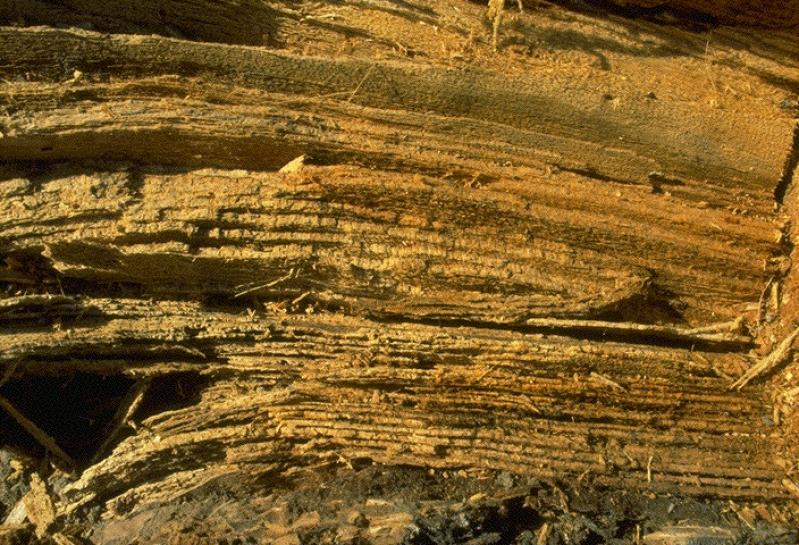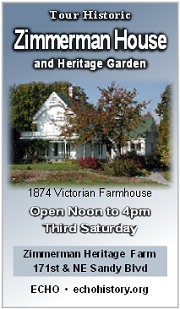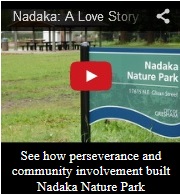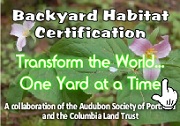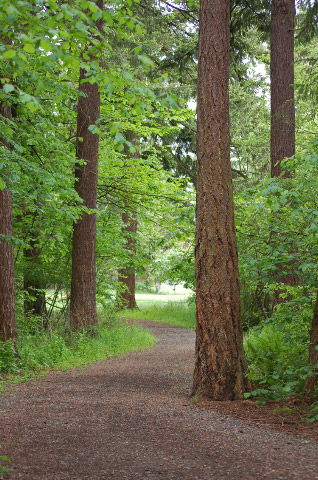 Nadaka Nature Park Click to enlarge |
Nadaka Nature Park
|
Protecting a Natual Resource
In 2009 Wilkes East Neighborhood Association (WENA) applied for and received a Metro Parks & Greenspaces Nature in Neighborhoods Capital Grant and a grant from the East Multnomah Soil & Water Conservation District (EMSWCD) to be used towards the purchase of the adjacent 2-acre Nelson Property for use as a public park. Both Metro and EMSWCD had requirements for the master planning of the Nelson property one of which was to do a vegetation management plan.
At the WENA annual meeting in August 2010, Ric Catron, City of Gresham Parks Planner provided information about this Plan for Nadaka Nature Park. Its purpose is a balance of protection of natural areas and future park development, restoration of the site and creating diversity for native wildlife and providing passive recreation.
This Plan includes: Property Report, Resource Inventory, Current Management Practices, Maintenance Costs, Management Goals, Landscape Management Recommendations for the forest, meadow, eco-lawn and future community garden. It also contains Volunteer Priorities, Staff Priorities and Monitoring Recommendations. As of this writing the Plan is still in draft form but should be available on the City of Gresham website within the next few months.
Threatened by Disease
A portion of this Plan deals with Laminated Root Rot (LRR) disease which has been identified on some Douglas Fir trees in Nadaka Nature Park. Approximately 13% of the Douglas Fir trees in Nadaka have been diagnosed with LRR. LRR is caused by the fungus Phellinus weirii. This fungus is widespread in Southern British Columbia, Washington, Oregon, northern California and western Montana. The name comes from the lamination of the decayed wood (see photo below). This disease is the most dangerous root disease in regards to tree failure. Primary hosts are Douglas Fir, White Fir, Grand Fir and Mountain Hemlock.
The Dept. of Forestry that performed the study for LRR has recommended an arborist come in every one or two years to monitor for LRR disease. As funds become available the City of Gresham should consider removing LRR infected Douglas Firs that are within 140 feet of park boundaries to prevent possible falling on surrounding occupied areas.
About Nadaka Park
Nadaka Nature Park is a lovely 10-acre parcel of "natural area" that includes a walking trail loop, tall trees, native plants, and a beautiful grassy meadow. Nadaka is located in the Wilkes East Neighborhood just north of NE Glisan St. The only public entrance to the park is on NE Pacific St at NE 176th Ave. Directions: from either NE 172nd Ave, or NE 181st Ave, take NE Pacific St to NE 176th Ave. Parking is curbside. Enter through the main gate. Get Map!
More Info
For more information about Nadaka Nature Park cleanups or to get involved with Friends of Nadaka contact Lee Dayfield by email at leewilkeseastna@hotmail.com.

